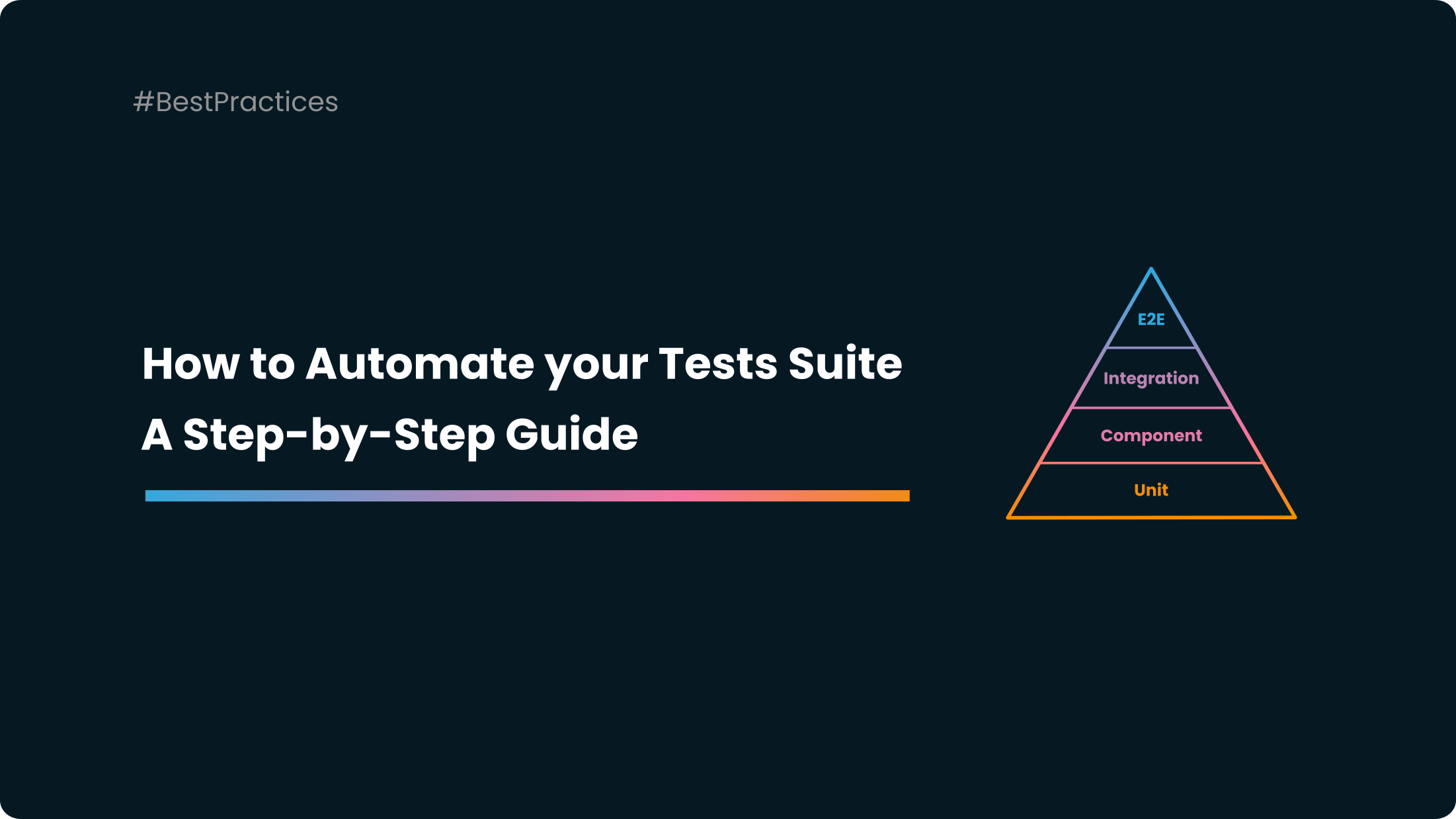Road to CI/CD - How to Automate your Tests Suite? A Step-by-Step Guide
Test automation in software development enhances efficiency and reliability. It offers rapid feedback, consistent execution, and broad test coverage. This article explores strategies for automating tests, from unit to end-to-end, highlighting their crucial role in modern development.

In today's rapidly evolving software landscape, where speed and reliability are of paramount importance, developers and software teams are increasingly turning to automation to enhance their testing processes. Automation accelerates testing and improves the software's overall quality by identifying issues early in the development cycle. This article will explore how developers and software teams can effectively automate their tests, from unit testing to end-to-end testing.
Understanding the Benefits of Test Automation
Before delving into the details, let's briefly review why test automation is a crucial aspect of modern software development:
1️⃣ Speed and Efficiency: Automated tests can be executed much faster than manual tests, enabling developers to get rapid feedback on code changes and reducing the overall development time.
2️⃣ Consistency: Automated tests perform the same steps and checks consistently, eliminating the variability that human testers can introduce.
3️⃣ Early Bug Detection: Automated tests can catch issues as soon as they are introduced, minimizing the likelihood of bugs entering production.
4️⃣ Regression Testing: As software evolves in time, automated tests ensure that new changes don't inadvertently break existing functionality.
5️⃣ Resource Optimization: Manual testing can be labor-intensive and resource-draining. Automation allows testers to focus on more complex and global scenarios while routine tests are handled automatically.
6️⃣Higher Test Coverage: Automated tests allows to cover a broader range of scenarios, leading to better overall test coverage.
Types of Automated Tests
Various types of tests can be automated to ensure comprehensive testing coverage.
1️⃣ Unit Tests: These tests verify individual components or isolated functions, ensuring each code unit performs as expected.
2️⃣ Integration Tests: Integration tests focus on how different components or modules interact. They help identify issues that may arise when other parts of the system are combined.
3️⃣ Functional Tests validate whether the software's features and functions work as intended. They often simulate user interactions and real world contexts.
4️⃣ End-to-end Tests: End-to-end tests validate the entire workflow of a user within the application, ensuring that the application behaves correctly from start to finish.
To automate your test suite practically, it is advised to start with the unit tests, then integration tests, functionals, and lastly, end-to-end
Step-by-Step Guide to Automate Tests Effectively

1️⃣ Test Strategy
Begin by defining a clear test strategy outlining which tests should be automated and which should remain manual. Focus on critical and frequently executed functions, blocks and scenarios for automation.
2️⃣ Test Frameworks and tools
Implement a robust test framework that structures your tests and provides reusable components, it will enhance maintainability and scalability of your test suite. More generally, choose automation tools that align with your technology stack and requirements, coherence should always be at the heart of your reflexion.
3️⃣ Continuous Integration Pipeline
Integrate your automated tests into your CI/CD pipeline. This ensures that tests are executed automatically whenever new code is committed, catching issues early and saving resources.
4️⃣ Version Control
Store your test scripts in version control systems like Git to manage changes. Collaborating effectively, and maintaining a history of test scripts is key to follow precisely the evolution of your test suite.
5️⃣ Parallel Execution
Use parallel execution tools to run tests concurrently, it will save time and improve overall efficiency and reactivity.
6️⃣ Data Management
Use tools to manage test data efficiently. This could involve creating test data on the fly or utilizing mock data for specific scenarios.
7️⃣ Reporting and Monitoring
Implement comprehensive reporting mechanisms to track test runs and results. Having control over your metrics helps in identifying trends, monitoring improvements or regressions, and addressing issues promptly.
8️⃣ Maintenance
Regularly update and maintain your automated test suite to accommodate changes in the application. This includes adapting to UI changes, updating test data, and incorporating new features.
Challenges and Best Practices
While test automation offers substantial benefits, it also comes with challenges:
🧐 Flakiness: Automated tests can be sensitive to environmental changes and cause false positives or negatives. Employ techniques like retry mechanisms or monitoring systems to handle and mitigate flaky tests.
🧐 Test Data Management: Create your own adapted strategy and structure to manage test data. As they are the fuel of your tests, they are essential for consistency and reliability.
🧐 Initial Setup: Setting up automation infrastructure is a challenging and time-consuming task that needs a methodic and organised execution. However, the long-term benefits outweigh the initial effort.
To overcome these challenges, consider these best practices:
✅ Regular Review: Regularly refine your automated test suite to remove redundant or obsolete tests.
✅ Collaboration: Foster collaboration between developers, testers, and other stakeholders to ensure that automation efforts align with business goals.
✅ Training: Provide training to team members involved in automation to ensure they understand the tools, frameworks, and processes thoroughly.
Conclusion
Automating tests is no longer a luxury but a necessity in modern software development. By incorporating automation into your testing strategy, you can achieve faster feedback loops, higher-quality code, and improved overall efficiency. By selecting the right tools, designing a robust framework, and following best practices, developer and software teams can seamlessly integrate automated testing into their workflows, ultimately delivering more reliable and powerful software to their users.





